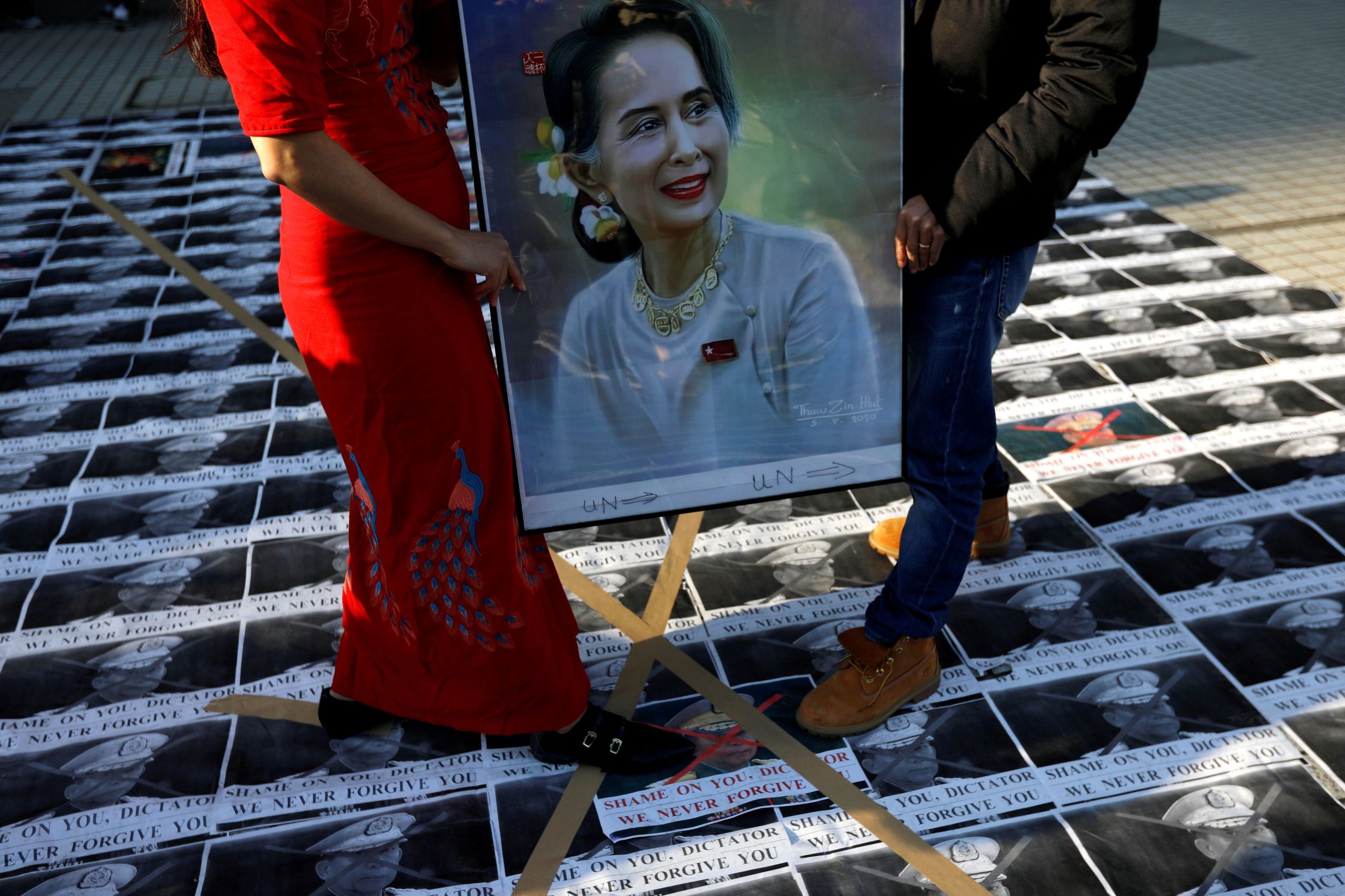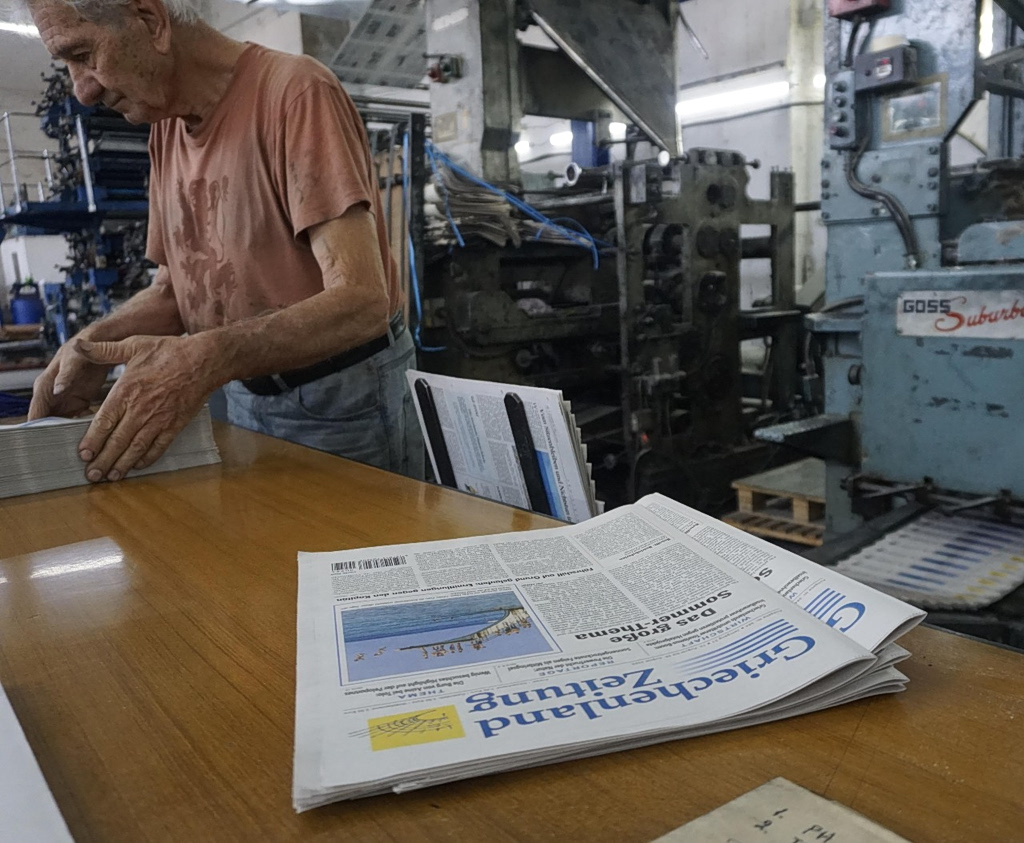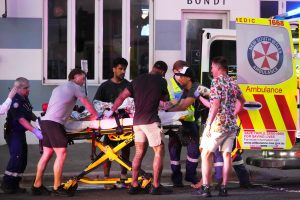The wave of violent earthquakes that tore through central Myanmar has brought the biggest challenges yet to a military junta already strained by years of rebellion and economic isolation.
How the generals handle the emerging catastrophe could make or break their grip on power. The quakes struck Myanmar’s central heartlands near the city of Mandalay, a centuries-old center of Buddhist learning and home to some 1.2 million people. They crumbled temples, bridges and roads in the capital Naypyitaw and trapped countless people under the rubble.
The hardest-hit regions are important power centers for the junta, which, according to independent monitoring groups, controls less than half of Myanmar’s territory. Pro-democracy fighters and decades-old ethnic militias have waged a grinding rebellion against the military since a 2021 coup that plunged the Southeast Asian country into the latest in a series of humanitarian and political crises.

Migrants protesting against the military junta in Myanmar hold a picture of leader Aung San Suu Kyi, during a candlelight vigil at a Buddhist temple in Bangkok, Thailand, March 28, 2021. REUTERS/Jorge Silva
The junta said Sunday that at least 2,028 people had been confirmed dead and 3,408 injured. Early modeling from the U.S. Geological Survey suggested that the number of earthquake deaths in central Myanmar could rise to tens of thousands and that economic losses might surpass the value of the country’s gross domestic product. Aftershocks continued over the weekend, including a 5.1-magnitude tremor just north of Mandalay on Sunday.
For some of Myanmar’s 55 million people, the quake’s destruction and loss of life awakened memories of an earlier natural disaster that struck in 2008 and ushered in an exceptional, if short-lived, chapter of political change.
That year, Cyclone Nargis descended on the nation’s coast and took the lives of at least 100,000 people as the regime played down the storm’s severity. Myanmar at the time was ruled by another reclusive and repressive military junta, which blocked international aid for weeks while it rushed through a referendum designed to cement its power.
Still, the severity of the crisis ultimately pushed the generals to engage with the United Nations, and is widely considered a watershed moment that helped lay the groundwork for Myanmar’s first democratic elections in a quarter-century in 2015.
“Many in Myanmar, steeped in superstition, may interpret natural disasters as cosmic retribution for failed leadership, an undercurrent that may erode the military’s standing further,” said Min Zaw Oo, executive director of the Myanmar Institute for Peace and Security, a policy think tank.
The official death toll of Cyclone Nargis stands around 85,000, although the U.N. has said more than 130,000 people died.
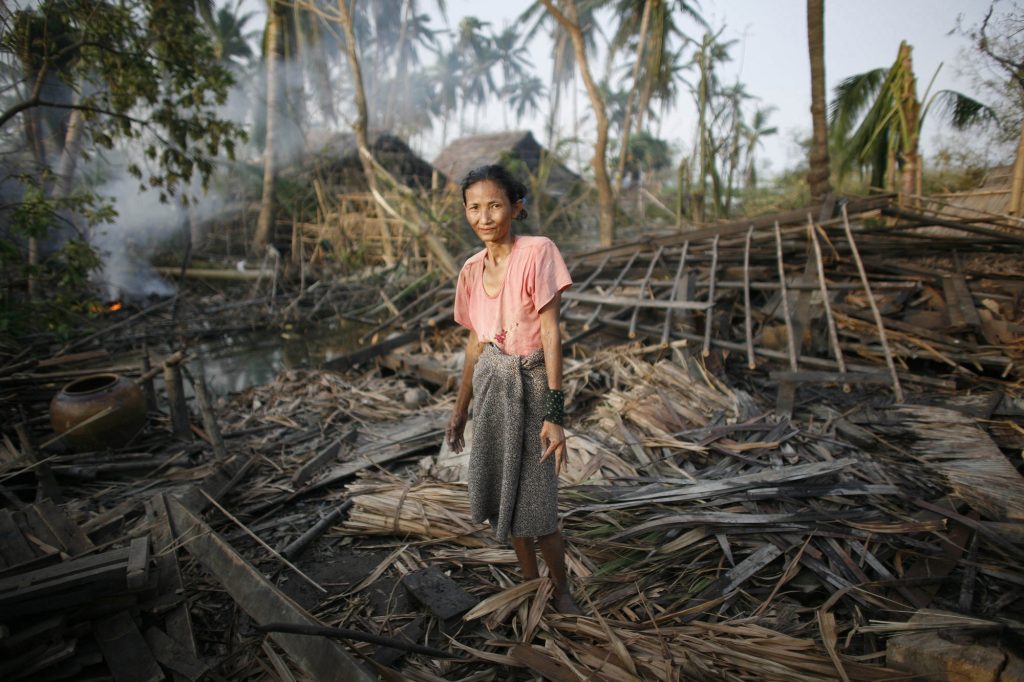
RNPS IMAGES OF THE YEAR 2008
A woman sifts through the debris of her home destroyed by Cyclone Nargis near Kunyangon May 9, 2008. Myanmar will accept foreign aid but not foreign aid workers, the foreign ministry said on Friday, after a disaster rescue team from Qatar that arrived in Yangon on an aid flight was turned back. REUTERS/Adam Dean (MYANMAR)
As night fell over central Myanmar on Saturday, more than 30 hours after the first and most powerful quake struck, the extent of the latest disaster was still coming into focus. Volunteers, some dressed in flip flops and traditional sarongs, were digging through the rubble with their bare hands, guided by muffled cries for help and a desperate hope to find survivors below the wreckage.
Min Aung Hlaing , the junta leader who ousted the elected government of Myanmar’s one-time pro-democracy icon Aung San Suu Kyi four years ago, had made a rare appeal for international aid. Rescue workers from China, Russia, India and the U.N. were rushing into the country, bringing with them anything from blankets to search dogs, beds for field hospitals and drones.
The earthquakes hit amid a relative impasse in fighting between the military and a patchwork of allied rebel forces that oppose the junta. Conflict spread throughout the country four years ago after a crackdown on anticoup protests led many to take up arms. The central plains and cities are now largely controlled by the military and rugged borderlands by the rebels.
Over the past year, the rebels had advanced near Mandalay and to parts of Sagaing, the two regions hit hardest by the quakes.
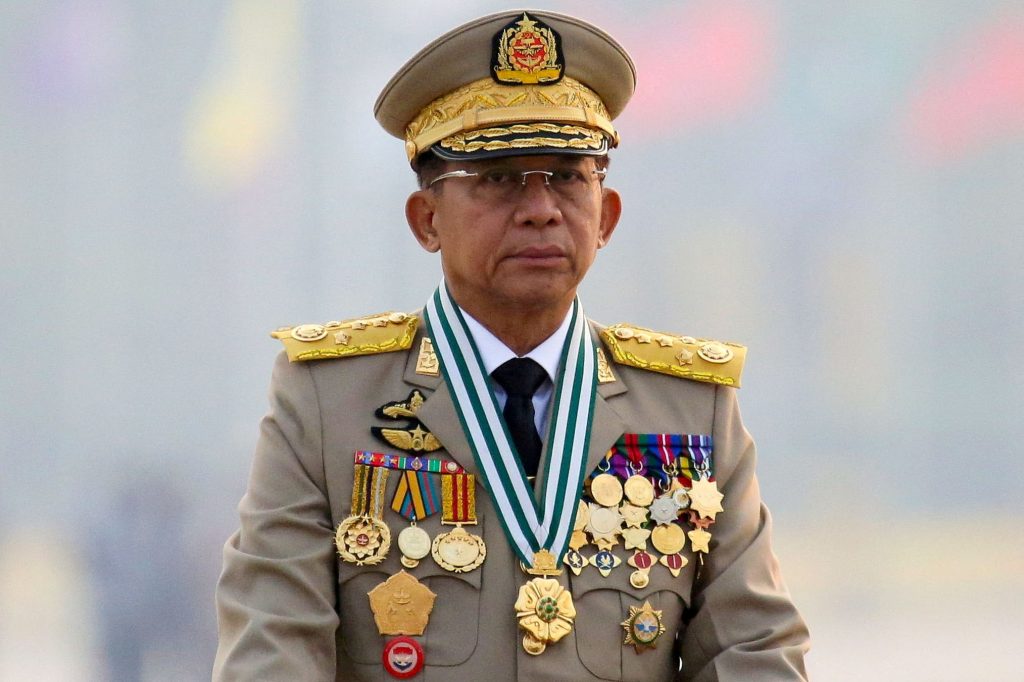
FILE PHOTO: Myanmar’s junta chief Senior General Min Aung Hlaing, who ousted the elected government in a coup, presides at an army parade on Armed Forces Day in Naypyitaw, Myanmar, March 27, 2021. REUTERS/Stringer/File Photo
The disaster has the potential to alter the course of the conflict, experts say. Rebels could seek to exploit junta vulnerabilities as resources are directed to the response and state infrastructure is damaged. But the rebels also risk losing some of their support if they are seen giving priority to military gains over urgent humanitarian needs.
Myanmar’s National Unity Government, a shadow administration made up of politicians ousted in the coup, has announced a two-week pause in fighting to facilitate rescue efforts, saying their forces would only take defensive action. Kyaw Zaw, a spokesman for the NUG, said junta forces carried out two airstrikes since the disaster—the first a few hours after the initial quake and another on Sunday morning.
Much may depend on how the junta handles the delivery of aid. Human-rights advocates said the current military leaders also have a history of using aid to its strategic advantage by blocking lifesaving assistance. The military has used airstrikes to target villages and civilian infrastructure.
“They don’t exactly have a good reputation of equally delivering aid,” said Joe Freeman, Myanmar researcher for Amnesty International. “This is the same regime that bombs hospitals and arrests aid workers, how are they going to be trusted to deliver it?”
Others worried that international aid, while desperately needed, could confer tacit legitimacy to the generals, whose claim to power hasn’t been recognized by the U.N. and most governments.
“In a way [Min Aung Hlaing] was snubbing his nose to the international community a bit, saying ‘You’ve got to work with me now,’ which will legitimize him,” said Yanghee Lee , co-founder of the Special Advisory Council for Myanmar, an advocacy group, and former U.N. rights envoy to the country. She urged foreign actors to work with the National Unity Government and rebel leaders, some of whom have managed independent aid networks for decades.
For now, the junta largely controls who can reach Mandalay and other heavily damaged areas. Richard Horsey, senior Myanmar adviser for the International Crisis Group, said the onus was on the regime to provide the access, visas and independence that a legitimate international response effort would require.
“The priority now should be mobilizing the resources and capacity needed, and then deal with problems as and when they arise,” he said.
Write to Feliz Solomon at feliz.solomon@wsj.com
